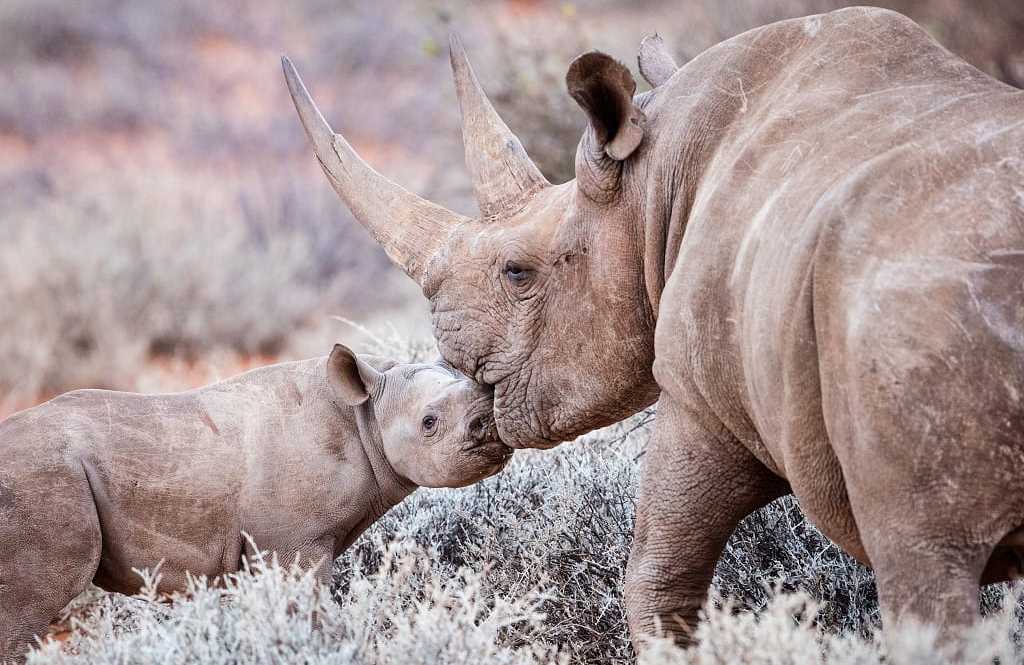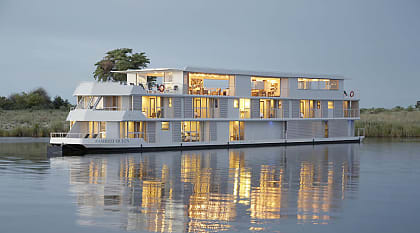Understanding how to protect rhinos is critical, but it is equally important to understand why their survival is vital. The loss of the rhinoceros would trigger a cascade of negative consequences, impacting entire ecosystems, local economies, and our planet's natural heritage.
The Ecological Value: Rhinos as Keystone SpeciesRhinos are considered a keystone species, meaning their presence is crucial to the health and stability of their entire ecosystem. As massive herbivores weighing up to 6,000 pounds, their grazing habits act as a natural form of landscape architecture. Every day, a single rhino consumes between 50 and 100 pounds of vegetation, shaping the environment in ways that benefit countless other species.
By consuming large amounts of vegetation, they create and maintain open grasslands. These grazing lawns provide food for other herbivores like zebras and wildebeest and create diverse habitats for smaller animals. The short grass areas they create become essential feeding grounds during dry seasons when other food sources become scarce.
Their movements forge pathways through thick bush that other animals use, and their dung fertilizes the soil and disperses seeds. A rhino can deposit up to 50 pounds of dung daily, which serves as a vital nutrient source and helps propagate plant species across vast distances. The extinction of the rhino would lead to dramatic, negative shifts in the savanna landscape, impacting countless other species in a domino effect.
The Economic Value: An Engine of Safari TourismThe rhinoceros is a cornerstone of the African tourism economy and a key member of the iconic Big Five. Travelers from around the world journey to Africa specifically for the chance to see one. The thrill of spotting a rhino in the wild drives safari bookings, lodge reservations, and extended stays in wildlife regions, generating substantial revenue that flows through entire communities.
The revenue generated from these rhino-focused safaris is substantial. A portion of the proceeds from your safari booking often goes directly to non-profit conservation organizations and anti-poaching units. Some estimates suggest that a single rhino can generate over one million dollars in tourism revenue throughout its lifetime, making it far more valuable alive than dead.
This tourism creates sustainable employment for local communities, providing a powerful economic incentive to protect their wildlife. Game rangers, lodge staff, guides, trackers, and support personnel all depend on the continued presence of rhinos to sustain their livelihoods. The loss of the rhino would be an economic catastrophe for many of these communities, potentially leading to increased habitat loss and human-wildlife conflict as people seek alternative income sources.
The Long-Term Value: Protecting Biodiversity for Future GenerationsRhinos are an umbrella species. Protecting them means we must also protect the vast, wild habitats where they live. These protected areas, spanning thousands of square miles of savanna and bush, are sanctuaries for all the other species that share the rhino's home. When you safeguard a rhino's territory, you simultaneously preserve habitat for elephants, lions, leopards, wild dogs, and hundreds of bird species.
Efforts to save the rhino, from anti-poaching patrols to the park and conservation fees included in your safari costs, directly benefit elephants, lions, giraffes, and thousands of other species. The infrastructure built for rhino conservation, including ranger stations, water sources, and protected corridors, serves the entire ecosystem. Every dollar invested in rhino protection creates ripple effects that extend far beyond a single species.
Conserving rhinos is therefore a commitment to preserving global biodiversity. It is about ensuring that these complex, beautiful ecosystems are not lost forever and can be experienced by future generations. The rhino serves as an ambassador for wilderness itself, representing our collective commitment to maintaining the wild places that remain on our planet.
The Ethical Value: A Moral ResponsibilityRhinos have roamed the Earth for millions of years, surviving ice ages, continental shifts, and countless environmental changes. Their current path to extinction is driven entirely by human activity, poaching fueled by the false belief that rhino horn has curative properties. This makes their plight not a natural evolutionary endpoint but a crisis of our own making.
As the stewards of the planet, there is a powerful ethical argument that we have a moral responsibility to prevent the disappearance of such a magnificent and ancient species. Allowing them to vanish due to human ignorance and greed would be an unforgivable failure. The rhino's survival is a test of our capacity for compassion, foresight, and our willingness to prioritize long-term ecological health over short-term exploitation.
Protecting them is a testament to our shared humanity and our commitment to coexisting with the natural world. When you take steps to safeguard rhinos during your safari, you participate in a global movement that recognizes the intrinsic value of all life and our responsibility to future generations.



